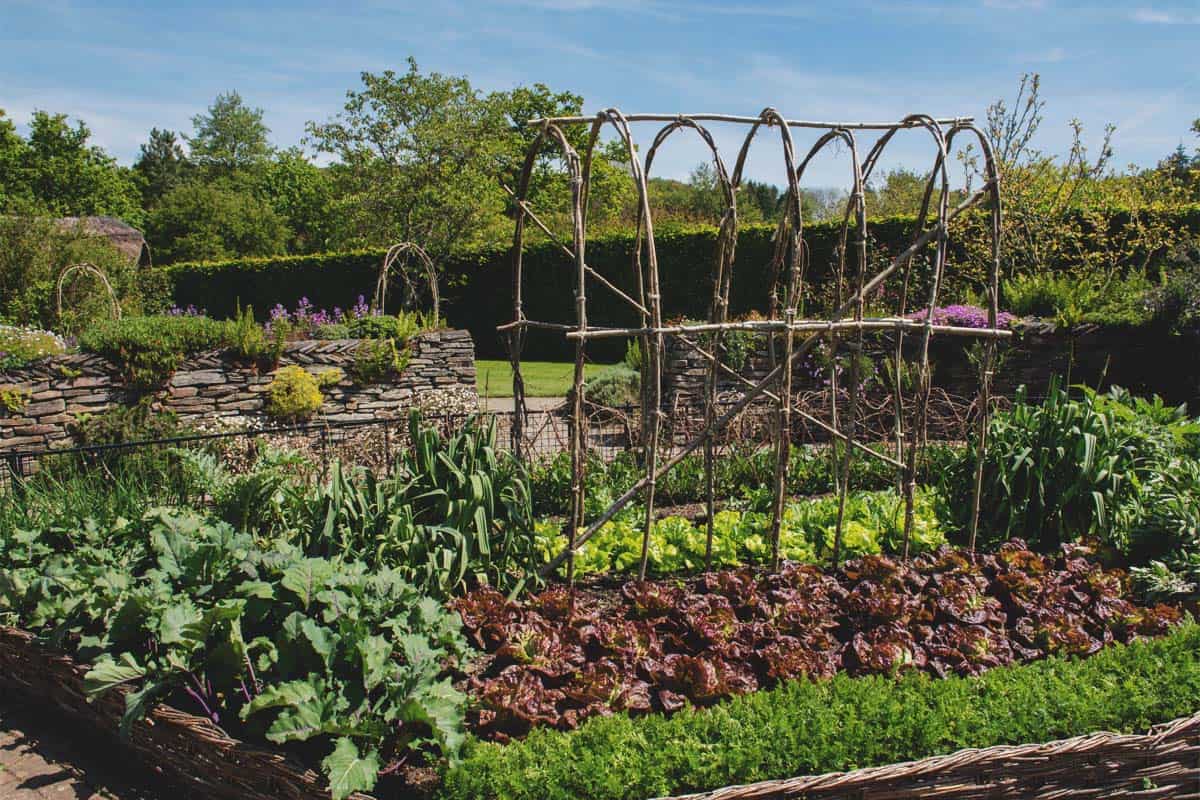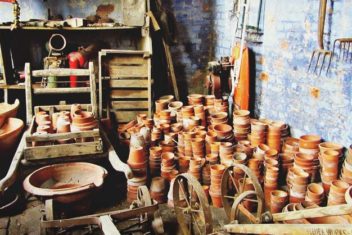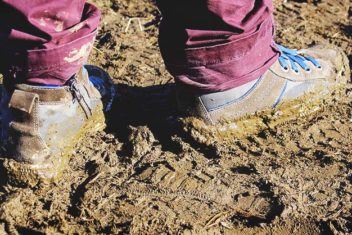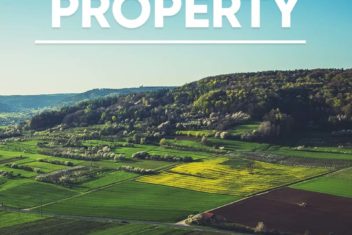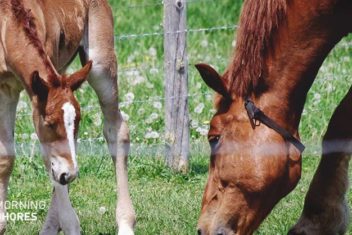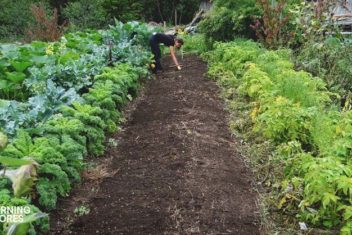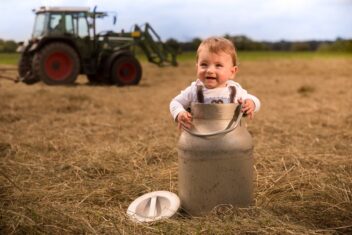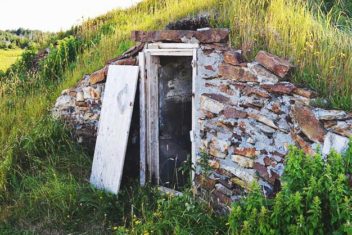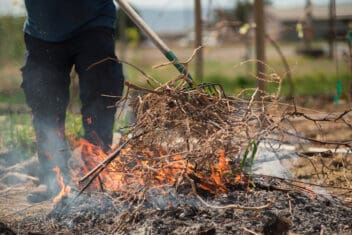If you don’t own your own property, you might think that homesteading is out of the question for you. The reality? It’s not.
In fact, more and more people are homesteading on rented land. While your options will be a bit more limited than if you owned the land yourself, there are plenty of homesteading tips you can follow to homestead on rented property.
Yes, even if you have never farmed before! Homesteading on rented land is a great way to dip your toes in the water. Before making the huge financial commitment of purchasing land, homesteading on rented land has many advantages.
Ultimately owning your own land is definitely the best solution, but you can follow our homesteading tips on rented land in the meantime.
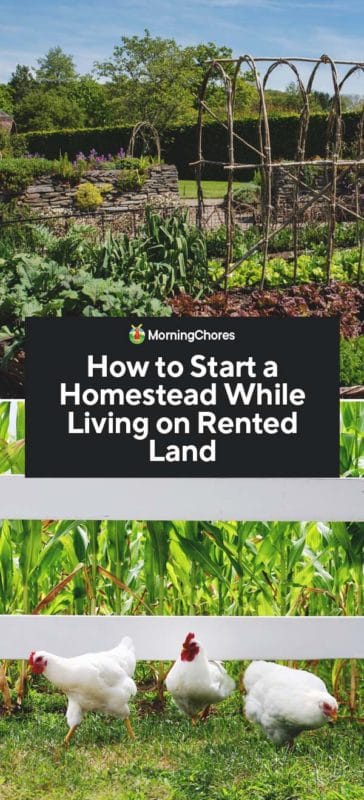
Homesteading on Rented Land Might Be a Better Option
Owning your own chunk of property has long been a fixture in the idea of the American Dream. However, the reality is that it is a huge commitment. This is both in terms of choosing a permanent location as well as your finances – and so it makes sense that renting is a better option for many people.
If you’re passionate about homesteading, though, keep in mind that it’s possible to begin homesteading even if you don’t own your own property. In some cases, you may even be eligible to receive a homestead exemption in certain states (but that’s usually only if you are paying the property taxes, which is uncommon but found in some rent-to-own situations).
Read our post on tax tips for homesteaders to understand the finer detail.
Otherwise, renting is a smart choice as it can save money in the short-term. Mortgages can easily skyrocket to more than $1000 per month, while rent usually stays below this cost. Again, you’re also usually not liable for home insurance or property tax, and sometimes you don’t have to pay utilities.
Renting is simply more practical for some people. If you live in a city, owning a home can come with exorbitant costs. If your job is temporary or you aren’t sure what direction your career is headed in, then renting simply makes practical and logistical sense.
The benefits of homesteading while renting can’t be overlooked. While there are certain challenges you will have to address and overcome – which we’ll get to in a minute – there are so many advantages to homesteading on rented land.
Not only will you be able to start farming and build your skills, but you will also be able to get started while you are looking for a more permanent spot to homestead.
How to Homestead on Rented Land

1. Stay Organized
Even if you’re homesteading on 200 acres of land, the reality is that your time, resources, and eventually, your space, are limited. You can’t do everything, and you definitely can’t do everything all at once.
You may need some help as you’re getting started, and you will absolutely need to stay organized. Come up with a vision for how you want your homestead to work. What are your priorities? Your goals? Do you want to grow all of your own food, or just provide enough vegetables to get your family through the winter?
Whatever your thoughts and plans may be, take the time to jot them down. Create a timeline for yourself with information on when you want to have these plans accomplished – but be flexible and patient with yourself, too. Keep a calendar but write everything in it in pencil.
2. Start with a Garden
One of the easiest ways to homestead on rented land is to start with a garden. You’ll need to check the terms of your rental agreement and talk to your landlord, but most landlords won’t object to you growing a garden. After all, it will improve the aesthetics of the property!
It’s especially important that you check-in before building any kind of structure, like a trellis or raised bed. This may not make your landlord overly happy, and it is somewhat permanent so you will definitely need his or her input.
If permanent structures are off the table – and digging is discouraged – keep in mind that there are plenty of other ways you can start a garden. You can create a container garden on your porch or balcony. Believe it or not, it’s actually not impossible to grow an entire year’s supply of food on just a terrace.
You can even start gardening indoors! Not only can certain plants easily be cultivated indoors with some grow lights and heat mats, but you can also start an indoor composting system with worms to feed your plants with nutritious fertilizer.
3. Choose Easy, Low-Maintenance Animals
Once you get the go-ahead from your landlord, you’ll want to consider easy-to-care-for, low-maintenance animals in your inaugural homestead voyage. Chickens are usually the go-to, but some municipalities prohibit them. Other options include rabbits – which can be kept indoors – pheasants, and ducks.
Small animals are going to require much less in the way of permanent fencing and housing. They are better options for rented land. Plus, if the time comes when you need to get up and move, small animals can be transported in a vehicle. Large ones, like sheep, pigs, or cattle, will need to be moved in a livestock trailer.
4. Permanent vs. Impermanent Structures
This next point is highly dependent on the conversations you have with your landlord. If you get the green light to do whatever the heck you want on your property, then kudos! You’ll have the ability to decide which kinds of structures work best for you. However, most landlords won’t be so accommodating.
If you do happen to luck out, don’t go too crazy with your fencing and barns at first. Decide whether it actually makes sense for you to erect permanent structures if you don’t actually own the land you are renting on. If you’re in a rent-to-own program, then sure – it might make sense.
However, if you can’t 100% guarantee that this property will be the one you end up settling down on, you may want to select impermanent structures instead. Things like cold frames and hoop houses can easily be disassembled and moved to a new location if you decide to move. The same goes for small, portable chicken coops (or chicken tractors) that could be moved relatively easily if necessary.
When it comes to fencing, think about the cost and time you will have in erecting it. Some types of fence, like electric, might not necessarily be cheap. However, they can be packed up and moved if you go anywhere. The same goes for electric poultry netting.
There are plenty of other low-cost fencing alternatives you might have to consider, too. These will allow you to either pack up and go with the fencing in tow. Otherwise, you can always leave it behind with no qualms since you paid so little for it, anyway.
5. Have Firm, Trustworthy Agreements
If you just started renting a property, you might want to wait it out until you decide to homestead on it.
That goes for people who are living on their rented properties as well as people who are renting land exclusively for the purpose of homesteading.
You really need to take the time to get to know the property owner and to make sure that the two of you have the same feelings about things. Everything should be in writing – and I mean everything.
Make sure you have a written contract with your landlord that goes beyond a basic lease. It should include information on what will happen in terms of payment, breach of contract, and any other kind of disagreement.
When you are renting a property, it is very easy to get swindled. Sure, there are plenty of laws in place to protect renters’ rights. However, you need to make sure you educate yourself before you start spending money and time on your homestead.
6. Reduce Your Waste
Start taking small but actionable steps to reduce your overall consumption and waste. Start composting and recycling as much as you can. If you have space, save parts and equipment that could be used to help you build your homestead later on.
Maybe you can’t homestead currently on the land you’re on right now. However, you may be able to gather enough resources and ideas (and money!) to make a difference later on.
How to Find a Homestead Rental
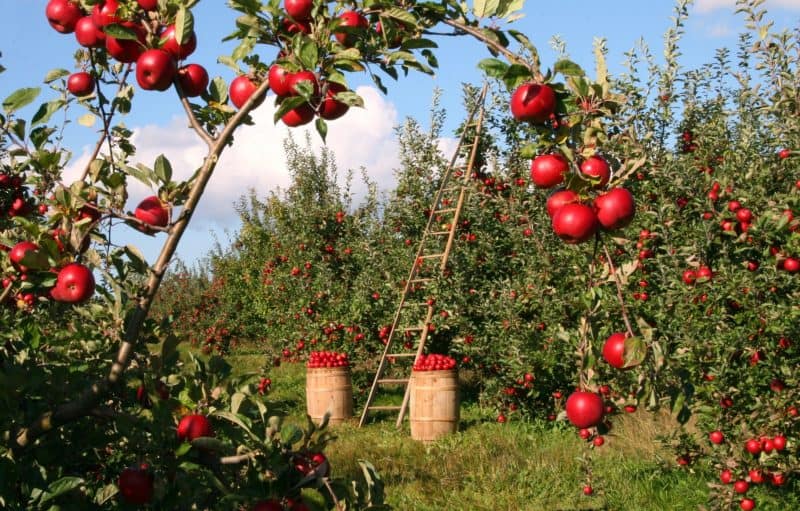
There are lots of places where you can find free land in the United States – often, it’s as simple as filling out an application.
However, keep in mind that you don’t necessarily have to live on the property where you homestead, either. Lots of people are interested in having their land worked for them so that they don’t have to. Garden sharing is a new concept that is rapidly gaining popularity – and it’s a great way to start getting your hands dirty.
Check your local newspapers and advertisements to find land near you, and be open to moving if necessary (and possible). There are also plenty of online databases like this one that has tons of information on where you can find land.
Homesteading Happens Where You Are
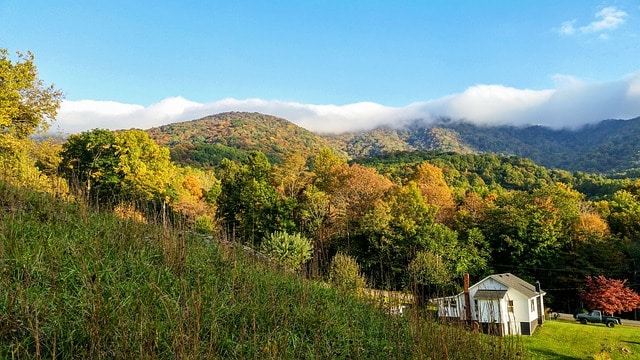
Here’s the thing – a homestead is, by definition, “any dwelling…where a family makes its home” – that’s according to Diciontary.com. So by extension, homesteading is more of a state of mind than an actual process.
So why not start small if the “traditional” homestead activities that people tend to think of – raising chickens, growing a garden, etc – seem too out of reach? Give some low-impact homesteading activities a try, like herbal medicine or making your own DIY cleaning supplies.
Start small. There are plenty of ways you can start living the homestead dream – even if your dream homestead doesn’t quite exist yet.
When you are ready to take the leap to purchase land, first review our 10 tips on purchasing the right land for first-time buyers.
